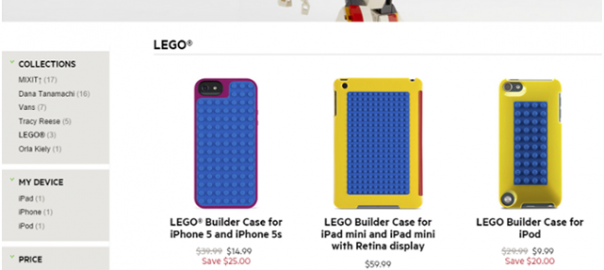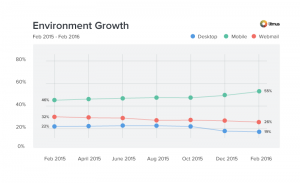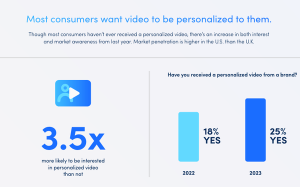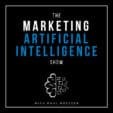Customer lifecycle marketing (CLM) defines the key stages that a customer evolves through, from acquisition to retention, over the course of the relationship with a brand.
We all know about the sales funnel and its involvement in the Customer Lifecycle. A customer is taken through the four essential stages of targeting, acquisition, conversion, and finally retention. However, the question remains: What would it take to convert a prospect to a lead, a lead to a customer, and for a customer to become a part of a community?
What type of visitors can convert to a sale more often? Especially, when your resources are limited? How do you tap the lifecycle process to obtain the maximum retention of customers, especially first time buyers? How can you ensure that, amongst all the hundreds of existing ecommerce websites, you are the chosen one?
This article shares use cases, at each Customer Lifecycle Stage, that have created commendable noise in the market and enviable results for companies.
Targeting
Picking a target market means making a decision on how to spend your limited resource of time and money within your target market.
Some effective strategies used in eCommerce:
Geographic targeting Strategies:
- Showing location and time specific ads during searches,
- Analysis of search activity and sales results to target high-volume regions,
- development of custom keyword lists
- Base bidding strategy on campaign goals
- Demographic targeting Strategies:
- Age and gender targeting. Searches will display advertising campaign that will only be visible to men or women in a certain age range.
- Design products to suit the targeted audience
- Age and gender targeting. Searches will display advertising campaign that will only be visible to men or women in a certain age range.
- Psychological targeting Strategies:
- Exposure to something new and unique
- Answer the customer’s’ mental questions beforehand
- Inspire curiosity.
- Exposure to something new and unique
A standout campaign:
Heineken, the beer brand, attracted beer connoisseurs when it rolled out “Reinvent the Draught Beer Experience” challenge, inviting ideas for making draught beer “more special or worth talking about”. It attracted hundreds of ideas, widely shared by people who enjoy a good drink. That’s generating brand interest, popularity and social promotion to just the right audience. Smart move!

Acquisition
Some effective strategies used in eCommerce:
- Setting up referral programs to take advantage of existing customers by means of offering them an incentive in return for a to referral to their friends by word-of-mouth, social media, or anything else.
- Increasing advertising by using pay-per-click ads, remarketing ads, content ads, and print ads which are targeted towards new customers.
- Organizing giveaways or contests on social media to obtain new email subscribers. This includes posting blogs regularly, tweeting about any special news and expanding followers and fans.
- Creation of a new marketing campaign with a fresh look and feel that appeals to a different market segment. This means a makeover of your website in level with the modern norms, getting some media exposure, and creating buzz about something that you are doing differently than your competition.
- Make the best of ad-free social media marketing and word-of-mouth. For word-of-mouth marketing to be effective, you can introduce competitions or giveaways, every once in a while. Excitement of winning an expensive prize just adds to the thrill of buying the product.
A standout campaign:
Enhance the impact of referral programs by bringing together an overall reward system for your visitors. The idea is to give back more than what customers expect. Apps like SLoyalty and LoyaltyLion create reward mechanisms that include even small actions like creating a customer account and making a purchase.

Convert
Some effective strategies used in eCommerce:
It is the truth that we all know- It’s cheaper to get past customers to come back and make another purchase than it is to find new ones. The percentage of users that convert to customers is the key to boost your revenue, sales, and ultimately profits. Here’s what most marketers do to get there:
- Discounts, free shipping, and giveaways- A study by Compete says that 93% of online buyers are encouraged to buy more products if free shipping were offered. Additionally, discounts and coupons are powerful marketing tools that allow you to give your clients special offers.
- Referral discounts- Refer friends and receive offers. With referral discounts you can test different ways of presenting an offer which would work, but still be optimized.
- Reviews and Ratings- According to a study by Figleaves it was found that products with reviews had a 12.5% higher conversion rate than products that did not. It was also discovered that the number of reviews mattered a lot as products with 20 or more reviews had a whopping 83.85% higher conversion rate than others.
A standout campaign:
Belkin tied up with Lego in 2013, to develop an amazing campaign around customizable iPhone cases. The product itself was attractive. Belkin leveraged its impact by creating a social platform where customers could show-off their purchase and share its benefits.
That’s every product purchase snowballing into many!

Retention
Some effective strategies used in eCommerce:
- Many ecommerce companies are implementing the strategy of rewarding customers for their loyalty. Another way they do it was by developing a loyalty membership to their store while also rewarding them for their repeat purchases.
- Regular Customer Newsletter Emails- Emails have, time and again, proven to be one of the top converting channels for ecommerce.
- Outreach and connecting with visitors on Social Media with regular posts
A standout campaign:
Diamond Candles, a scented candles eCommerce store, collects product photos and even videos from their customers and optimizes them so these can be used for their marketing efforts.
The company is converting its product into a marketing tool and attracting more customers with each purchase. Its homepage promotes that buyers may discover a ring in their candles. Customers can enter the unique code on the candle and find out if their candle has a ring. They also see a call-to-action urging them to take a photo with the ring and share it on Facebook or Twitter.

According to the CEO, they had figured out that the best way in which they could communicate the value proposition was through a succinct photo that showed the ring coming out of a candle.
Conclusion
You don’t necessarily need to be a multinational corporation to do well in marketing. All you need is a little twist in your thought patterns and then add intangible value to your customers without adding to your marketing expenses.
A focus on engaging with your customers, offering them rewards that are irresistible, and take advantage of social proof and the power of word-of-mouth marketing.
This article was first published on TargetingMantra’s Blog.
Digital & Social Articles on Business 2 Community(48)







